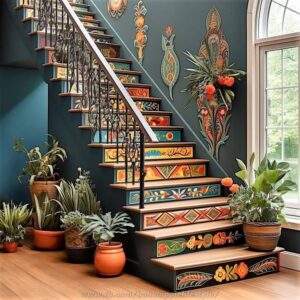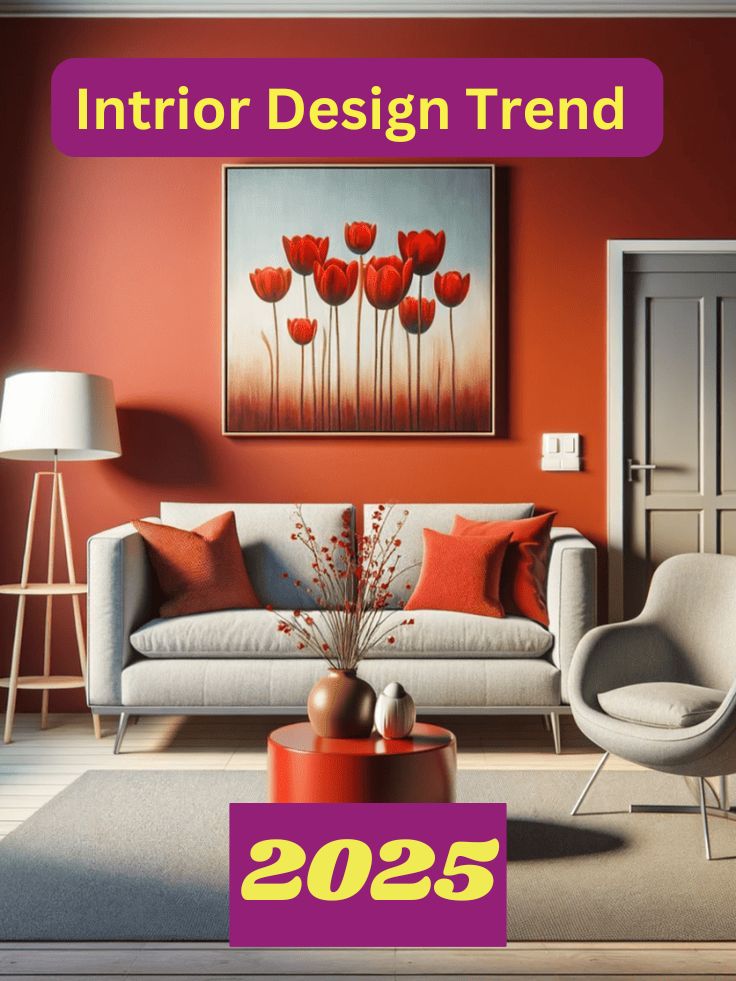Spanish art is well known for its elaborate designs, vivid colors, and long history. Spanish art may add warmth, elegance, and a dash of Tropical flair to your home décor, whether you are drawn to the strong brushwork of Spanish artists, the complex designs of Arabic effect, or the rustic beauty of traditional Spanish skill. Here’s how to include Spanish art into your home’s décor without looking odd.

Comprehending Spanish Art:
Spanish art is a broad style that includes a variety of styles, from the modern creations of Pablo Picasso and Salvador Dali to the additionally, the Moorish past of Spain has had a lasting impact, which is most visible in the elaborate tile work and geometric patterns that define Spanish style.
Spanish Paintings Included:
Paintings are among the simplest methods for including Spanish art into your interior design. Any area can benefit from the historical and elegant touches provided by the works of Spanish masters. In your study or living area, think about putting up a replica of a Goya landscape or a picture by Velazquez. Look at Picasso’s cubist pieces or Dali’s surrealist works for a more modern aesthetic. These well-known paintings can act as centers of attention, attracting interest and inspiring discussion.
Embracing Tile work’s Moorish Influence:
Spanish art and architecture have been greatly impacted by the Arabs, especially in the use of “azulejos” tiles. These flesh out geometric designs and bright shades on these hand-painted tiled floors make them ideal for bringing a little Spanish flair into your house.
Make a gorgeous back splash in your kitchen, a pretty border in your bathroom, or even a focal wall in your living room using *azulejos*. You might be immediately transported to the classical palaces of Spain by the patterns and shades of these tiles.
Including Textiles from Spain:
One flexible look at for bringing Spanish art into your décor is through textiles. Search out pillows, rugs, or blankets with traditional Spanish colors and designs weaved into them. Spanish textiles are known for their bright yellows, blues, and reds, which may give your room a sense of warmth and energy. To add a little bit of Spain to your dining area, think about using a beautifully patterned tablecloth or putting a traditional Spanish “Manton” (shawl) over a sofa.
Spanish furniture and a rustic charm:
Spanish furniture is defined by its solid wood frame, which is frequently embellished with wrought iron accents. Spanish furniture has a handcrafted, rustic appearance that can bring a feeling of culture and history into your house. An antique sideboard, a thick wooden dining table, or a headboard with complex designs can all act as focal points that draw attention to specific areas of your décor. To finish the design, pair these with decorative metalwork or handmade iron light fittings.
Using Ceramics and Pottery:
Pottery and ceramics have a long history in Spain, and each region has its own unique style. Spanish pottery can give your home a handmade touch. Examples of this type of pottery are the vivid, colorful ceramics of Catalonia and the blue and white pottery of Talavera. Use colorful vases in your living room, use a set of hand-painted Spanish tiles as mats on your coffee table, or arrange ceramic plates on a kitchen wall. You may include a little bit of Spanish culture into your daily life with these minor accents.
Using Spanish sculptures to decorate:
Another option to add Spanish art to your house is through sculptures. Sculptures, whether they be religious figures, antique bronze statues, or contemporary abstract art, can give depth and complexity to your interior design. Think of putting a sculpture as the focal point of a coffee table, in an interior alcove, or on a mantel. A tastefully chosen artwork may enhance any room’s charm.

Including a Little Flamenco:
Another essential component of Spanish culture is flamenco, an emotional and expressive style of Spanish dance and song. With bright art that reflects Flamenco, you can bring the energy of the dance into your house. Seek for artwork that reflects flamenco, such as paintings, posters, or even photos that perfectly express the energy and passion of the dance. Additionally, you can use decorative components like castanets or a real Flamenco guitar.
Conclusion:
You may honor Spain’s rich cultural history by including Spanish art into your interior design. There are many ways to bring the warmth and brightness of Spanish art into your house, whether it be through the classic elegance of Spanish paintings, the exquisite beauty of Moorish tiles, or the rustic appeal of traditional Spanish furniture. You may make a room that is both fashionable and rich in history by carefully choosing things that speak to you and go well with the existing décor. —
This blog post would be a great addition to your “Home Décor Ideas” website, providing inspiration and practical tips for readers interested in incorporating Spanish art into their home décor.
For more read about décor ideas click here
How does classic Spanish art differ from other European styles?
Classic Spanish art tends to focus more on religious and historical themes, with a strong emphasis on realism and dramatic emotional expressions. While Italian Renaissance art emphasized idealized beauty, Spanish art remained more rooted in spirituality, realism, and at times, darker themes like suffering and redemption.
What are some famous Spanish art museums where I can view classic works?
Museo del Prado (Madrid): One of the most renowned museums in the world, it houses masterpieces by Velázquez, Goya, and El Greco.
Museo Nacional Centro de Arte Reina Sofía (Madrid): Home to modern works, including pieces by Goya and Picasso.
Museo Thyssen-Bornemisza (Madrid): Features a wide range of Spanish art, from Gothic to modern periods.
Museo Picasso (Barcelona): While focused on Picasso’s work, the museum offers insight into Spanish art’s evolution.






BWER Company is Iraq’s leading supplier of advanced weighbridge systems, offering reliable, accurate, and durable solutions for industrial and commercial needs, designed to handle heavy-duty weighing applications across various sectors.